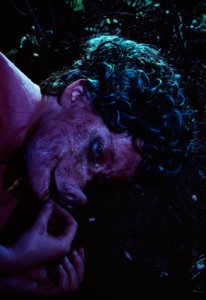For anyone who is just reading my blog for the first time, welcome!
Last semester, my blog focused on female artists throughout the ages. Each of the women I wrote about were undeniable tours de force– women who were not afraid to do something out of the ordinary, to do something that wasn’t “meant” for them. These women, oftentimes, have been forgotten by history, overshadowed by their male peers. But when I ended my posts with a 20th century artist who really redefined the art world, I decided to explore this ever-changing landscape. This semester, I’m going to delve into the plethora of current female artists that are out there today. I admit that I’m very unfamiliar with modern artists, but I’m looking forward to starting this journey with you all!
Cindy Sherman: Born January 19, 1954, Glen Ridge, New Jersey
http://media.ai-ap.com/images/inline_image/2012/12/15/sherman_geneva.jpg
Cindy Sherman was born into pretty ordinary circumstances– she lived in a middle-class New Jersey suburb, to a father who was an engineer and a mother who taught English. But none of this normality is reflected in her arresting, sometimes outlandish photographs. The unique nature of Sherman’s work didn’t reveal itself immediately, though. When she was an art major in Buffalo State College in the early 1970s, she found herself doing mostly paintings, as she found “difficulty with the technological aspects” that come along with photography. She persisted despite her initial issues, though, and quickly fell in love with the art form.
Sherman found that photography was a prime medium for conceptual art, a movement that “prizes ideas over the formal or visual components of art works.” The style quickly overtook the art world in the 1960s and 70s, and could be found from more traditional art forms, like painting, to performance art pieces. One of Sherman’s first major bodies of work was called Untitled Film Stills, a project three years in the making. These pieces, I think, are a great achievement for feminism, as they challenge the traditional ways media often chooses to represent women. The stills depict Sherman as different stereotypical female characters in popular culture, questioning how we make women feel like they need to fit into a certain (and often very conflicting) role.
Two of Sherman’s Untitled Film Stills (#14 and #84)
As her career progressed, there’s a frequently noted shift towards the bizarre and disturbing in Sherman’s work. Disasters and Fairy Tales, a series four years in the making that ended in 1989, shows twisted, monstrous figures that are nothing like the fairy tale characters we’re used to. To be entirely honest, I don’t think critics quite know exactly what the series means– if it even means anything in particular at all. I’ve read that some feel it’s a critique on the inherently (but often ignored) unsettling nature of a lot of fairy tales and classic stories, while others think it “challenged viewers to find beauty in the ugly and the unqualified grotesque.” Nonetheless, Sherman stuck with this pattern of intrigue and creepiness in her work, and released History Portraits several years later. True to its name, the photographs show the artist dressed as many of the subjects in famous historical artworks. 

Untitled Stills #140 and #224
Cindy Sherman is still very active in her work, and had an exhibit at the MoMa in 2012. She continues to explore the unusual, and was a pioneer for the use of certain methods in photography. Sherman is seen as a legend in the art world today, and is as unafraid as ever to question that which is quietly accepted.
Sources:
http://www.biography.com/people/cindy-sherman-39916#synopsis



